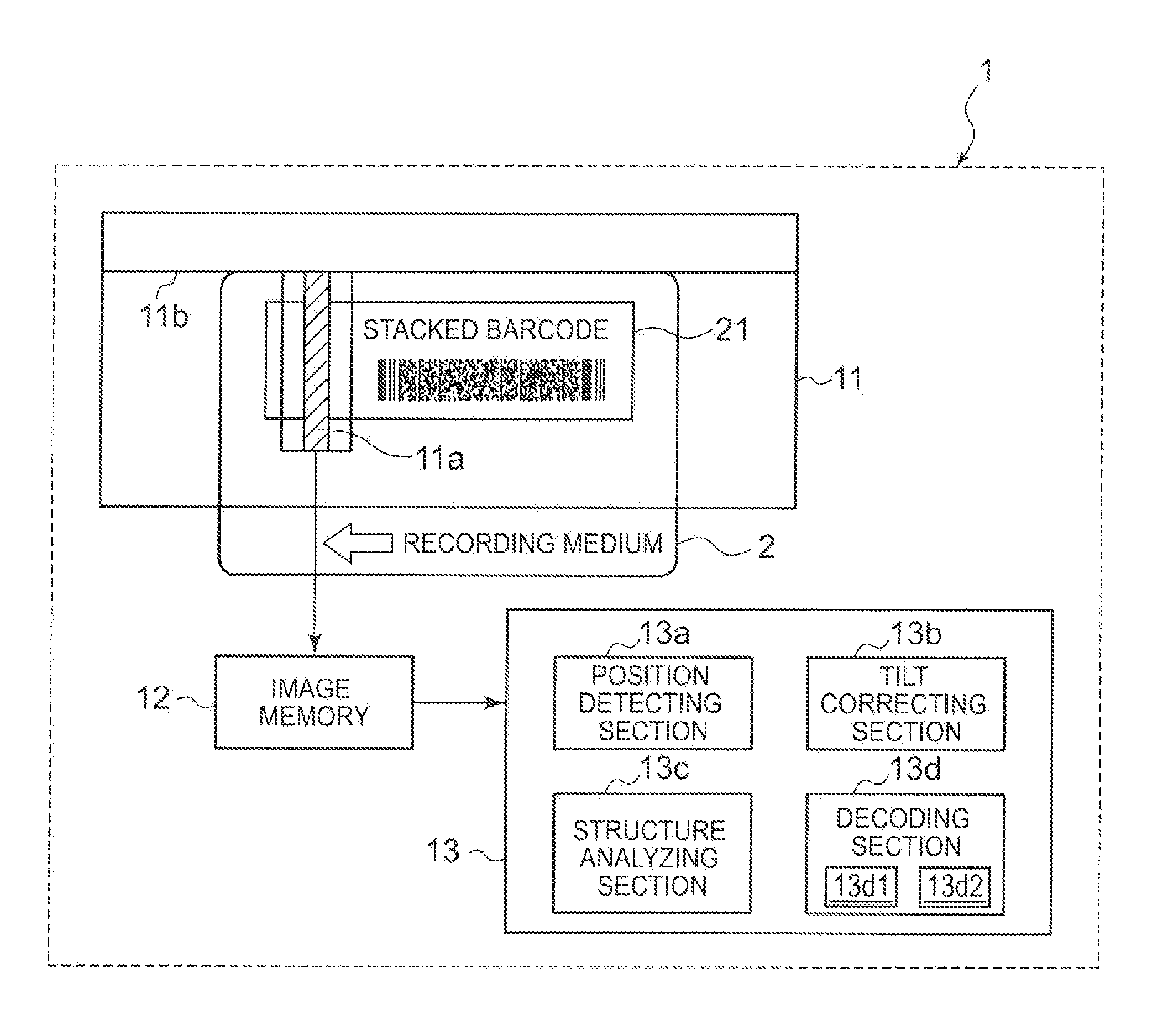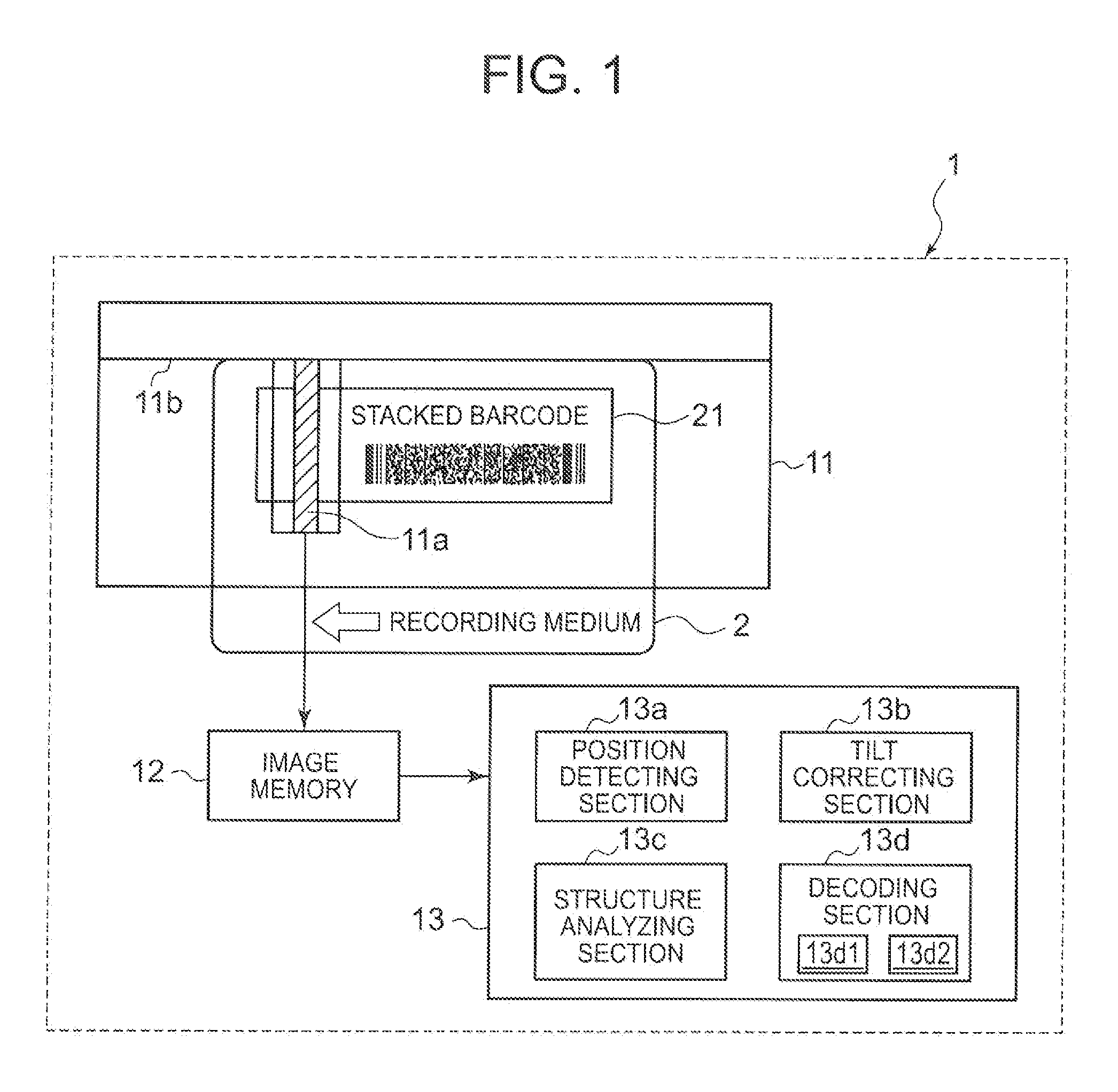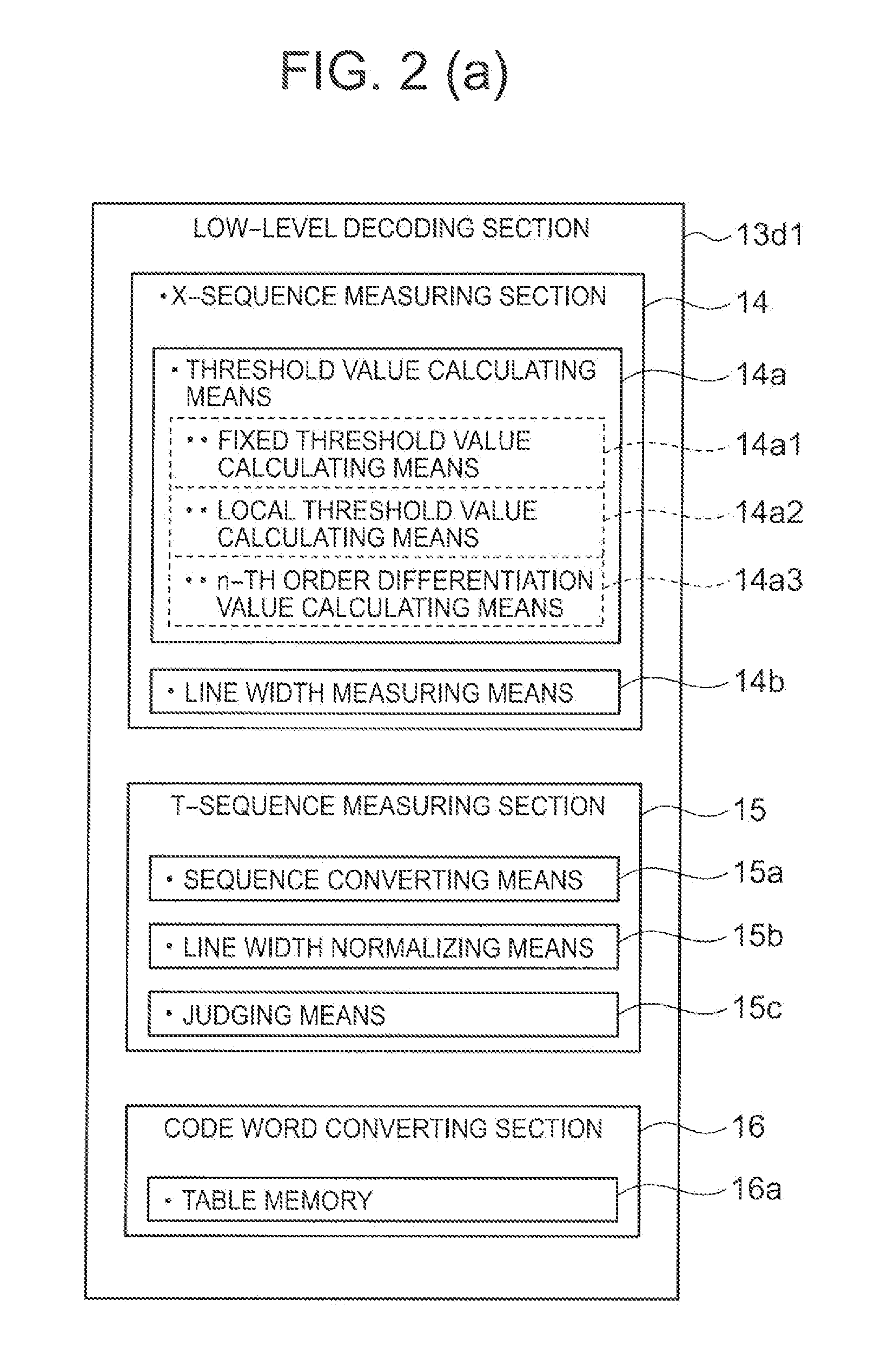Stacked barcode reader and stacked barcode reading method
a barcode reader and stacked technology, applied in the field of stacking barcode readers, can solve the problems of deviating the scanned reflection coefficient waveform of the stacking barcode, affecting affecting the accuracy of the stacked barcode reading, so as to improve the reading performance of the barcode reader, improve the accuracy of reading, and reduce the number of decoded code words
- Summary
- Abstract
- Description
- Claims
- Application Information
AI Technical Summary
Benefits of technology
Problems solved by technology
Method used
Image
Examples
embodiment 1
of the Invention
[0043]FIG. 1 through FIG. 16 show an embodiment 1 of the present invention. In Embodiment 1, an image pickup device 11 is used for an imaging section; a data processing device 13 is used for an data processing section; a threshold calculating means 14a is used for a line width calculating means; a fixed threshold calculating means 14a1 and a local threshold calculating means 14a2 are used for a binary threshold calculating means; a T-sequence measuring section 15 is used for a T-sequence measuring means; a code word converting section 16 is used for a code word obtaining means; and a priority order deciding section 17 is used for a priority order deciding means.
[0044]Stacked Barcode Reader
[0045]FIG. 1 is a block diagram of an electrical configuration of a stacked barcode reader 1 of an embodiment 1 of the present invention. FIG. 2 (a) is a block diagram of a low-level decoding section of the stacked barcode reader of Embodiment 1.
[0046]In FIG. 1, the stacked barcode ...
embodiment 2
of the Invention
[0161]Embodiment 2 of the present invention is described hereinafter.
[0162]Embodiment 2 of the present invention is shown in FIG. 1 through FIG. 17. Note that since a block diagram of an electrical configuration of a stacked barcode reader, a diagram showing an example of the stacked barcode, a flow chart of a stacked barcode reading method and the like in Embodiment 2 of the present invention are similar to those of the above-described embodiment 1 of the present invention, the same figures are used for FIG. 1, FIG. 3 through FIG. 10 and FIG. 12 to FIG. 16. To simplify the description, the descriptions for these portions are omitted, and the same numbers as those in Embodiment 1 are used in the descriptions for the configuration having the same function. Hereinafter, Embodiment 2 is described using FIG. 2 (b), FIG. 11(b) and FIG. 17 focusing on the different points from the above-described embodiment 1.
[0163]FIG. 1 through FIG. 17 show an embodiment 2 of the present...
PUM
 Login to View More
Login to View More Abstract
Description
Claims
Application Information
 Login to View More
Login to View More - R&D
- Intellectual Property
- Life Sciences
- Materials
- Tech Scout
- Unparalleled Data Quality
- Higher Quality Content
- 60% Fewer Hallucinations
Browse by: Latest US Patents, China's latest patents, Technical Efficacy Thesaurus, Application Domain, Technology Topic, Popular Technical Reports.
© 2025 PatSnap. All rights reserved.Legal|Privacy policy|Modern Slavery Act Transparency Statement|Sitemap|About US| Contact US: help@patsnap.com



